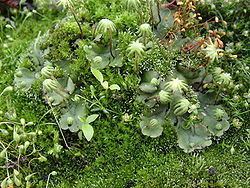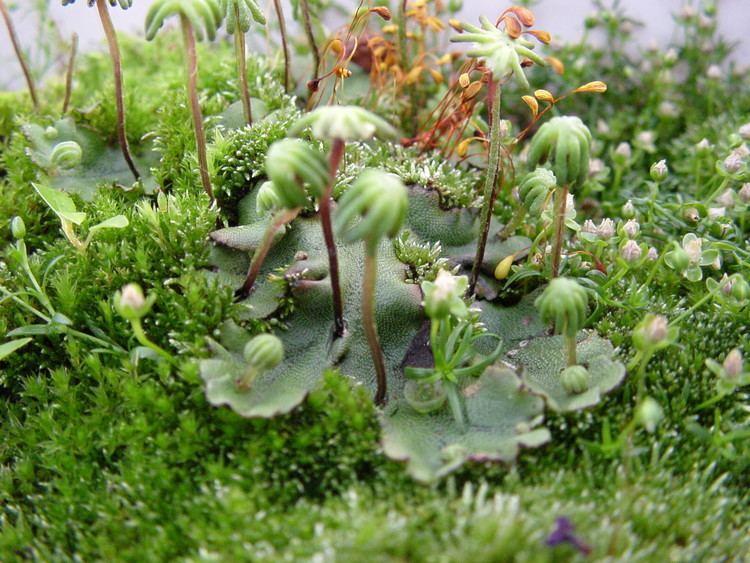Higher classification Marchantia | Scientific name Marchantia polymorpha Rank Species | |
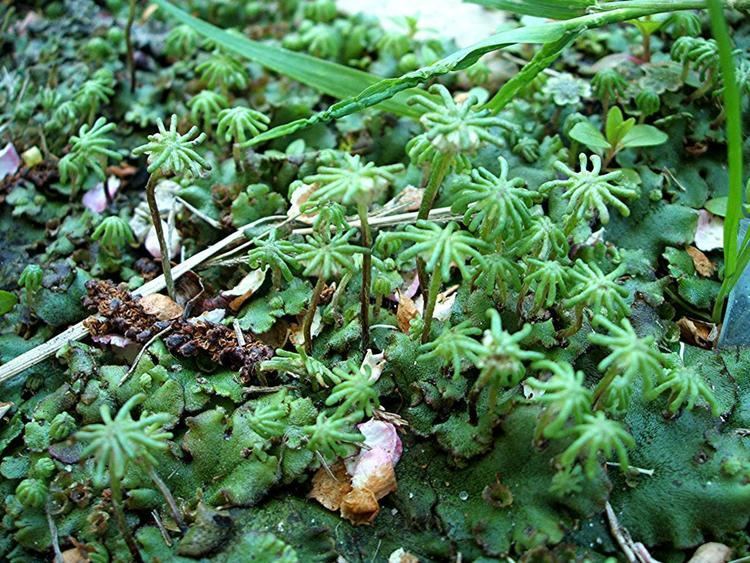 | ||
Similar Marchantia, Liverworts, Hornwort, Marchantiaceae, Marchantiales | ||
Marchantia polymorpha dna
Marchantia polymorpha, sometimes known as the common liverwort or umbrella liverwort, is a large liverwort with a wide distribution around the world. It is variable in appearance and has several subspecies. It is dioicous, having separate male and female plants.
Contents
- Marchantia polymorpha dna
- Sporophyte and female flowers of marchantia polymorpha
- Description
- Distribution and habitat
- Chemistry
- References
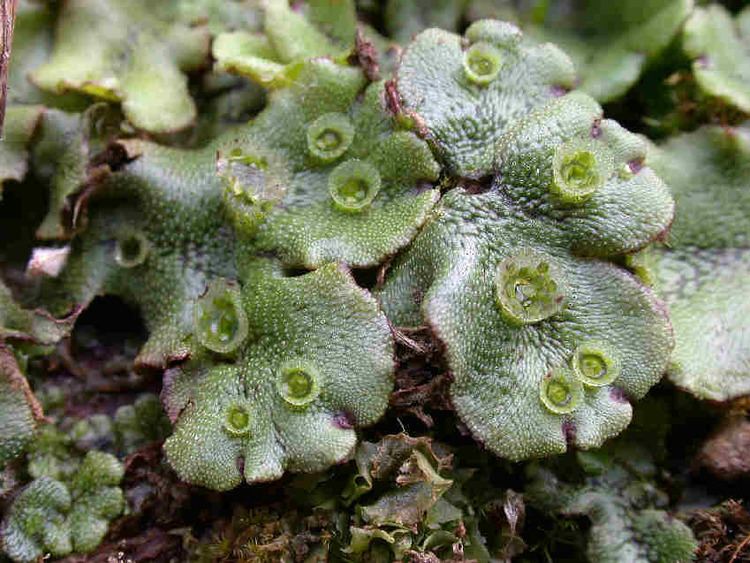
Sporophyte and female flowers of marchantia polymorpha
Description
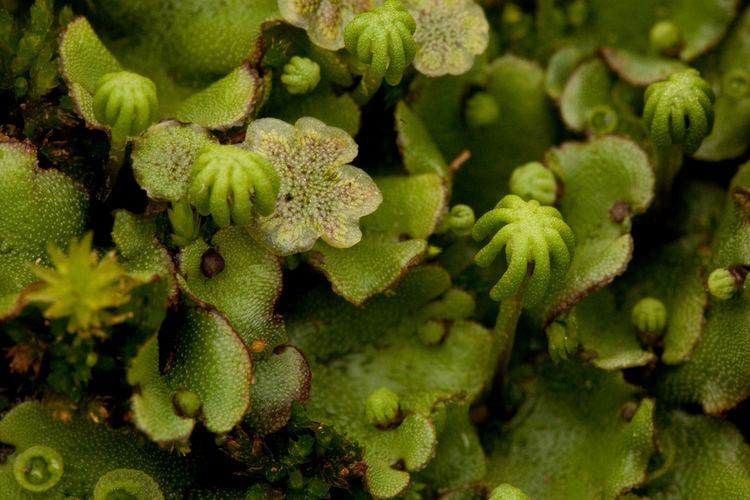
It is a thallose liverwort which forms a rosette of flattened thalli with forked branches. The thalli grow up to 10 cm long with a width of up to 2 cm. It is usually green in colour but older plants can become brown or purplish. The upper surface has a pattern of hexagonal markings. The underside is covered by many root-like rhizoids which attach the plant to the soil. The plants produce umbrella-like reproductive structures known as gametophores. The gametophores of female plants consist of a stalk with star-like rays at the top. These contain archegonia, the organs which produce the ova. Male gametophores are topped by a flattened disc containing the antheridia which produce sperm. This species reproduces asexually by gemmae that are produced within gemmae cups. Gemmae are lentil shaped and are released by droplets of water. Plants produced in this way can expand a patch significantly.
Distribution and habitat
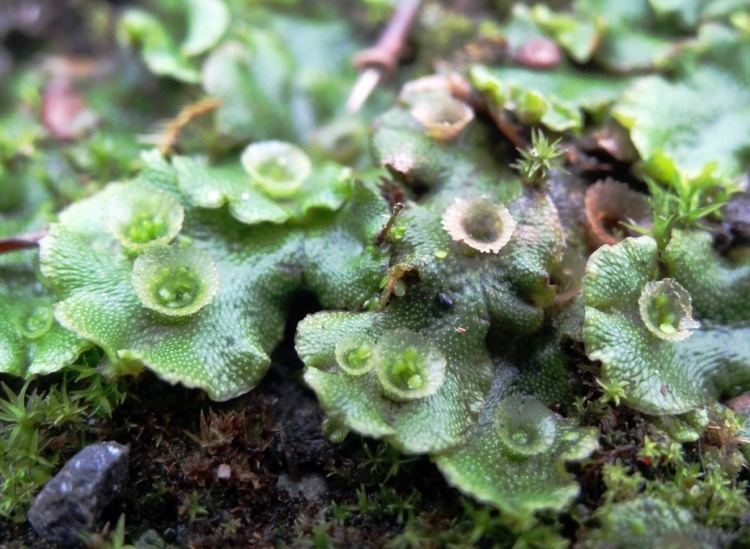
It is found worldwide from tropical to arctic climates. It grows on moist soil and rocks in damp habitats such as the banks of streams and pools, bogs, fens and dune slacks. It rapidly colonizes burnt ground after fires. It often grows in man-made habitats such as gardens, paths and greenhouses and can be a horticultural weed.
Chemistry

Marchantia polymorpha produces the antifungal bis[bibenzyls] dihydrostilbenoids plagiochin E, 13,13'-O-isoproylidenericcardin D, riccardin H, marchantin E, neomarchantin A, marchantin A and marchantin B.
